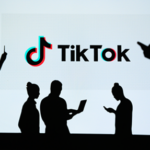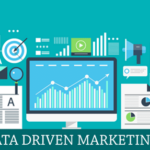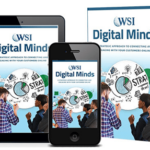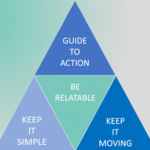Consumer information is available for all types of customers in this ever-connected customer-centric society. A key to understanding the consumers who may be current or future buyers of your product or service is developing one or more “personas” which will represent these consumers effectively. A target customer persona (or buyer persona) is a fictional archetype and avatar of your ideal customer. Defining your buyer persona is a critical step in doing the research and legwork before launching a new brand, product, or campaign. Ask yourself, not just who your intended audience is and what they are like, but where they like to shop, what they like to buy, what problems are they trying to solve, and where and when they make their purchases.
According to experience by marketing executive and founder of Barn Raisers, Rob Peterson, 3 to 4 personas make up 90% of a businesses’ sales. With this in mind, let’s take a look at some useful tips that will allow the process of generating the buyer persona to be easier than ever.
Just What Is A Target Customer Persona?
A buyer persona is going above and beyond collecting the usual generic demographics information. It is developing a more detailed picture of the kind of person who would be interested in buying your products. The general information such as age, gender, sex, educational background, salary, and family size are the basics. Examples of developing a persona include evaluating shopping habits, solving a problem with the purchase of your product or service, and knowing a customer’s core values. These extras give a more well-rounded picture of your current and potential customer base.
What makes your ideal customer want to buy your product? There are many facets to this fundamental question that can be answered with the assistance of a buyer persona. If you know who your customers are, or aren’t, this gives you the tools to market to a particular group of people in a specific way. Narrow your focus to those who really want or need your product or service.
A buyer persona is about getting to know your customers on a deeper level. How much money they make or what kind of car they like to drive are surface indicators. Ask more meaningful questions. What do they want to do in their spare time? What brings joy to their life? Which stores do they enjoy going to and why? What kind of music do they listen to?
Buyer Persona Made Easier
Developing buyer personas gives you clarity and purpose, honing your target audience in a specific way. Ask real customers for feedback to create several buyer persona profiles. A buyer persona is useful for both B2B or B2C businesses. The profiles will differ slightly as a B2C profile is focused on the individual who makes the purchasing decisions, whereas a B2B is a business buying the product.
If you know exactly who your target audience is, then it makes your content marketing campaign and social media marketing efforts much more focused and exact. How do you find this information to make a buyer persona easier to create? Tools such as keyword research, social media analytics, and survey results combine to give a clearer picture of your typical customer base.
Persona Progression
So, after you’ve developed a few buyer personas for your business, it’s time to put your research to work. Observe where your customers spend their time online and build a website that will offer them a great experience. Think too about where they spend time in the real world. Which social media platforms do they use the most and for what purpose? Which charities or causes do they support?
Partner with other brands or public personalities who speak to your desired customer base. An effective partnership can bring more customers, greater trust in your brand, and higher visibility. Both parties can benefit from a shared marketing opportunity by joining forces.
Using Tapestry Segmentation In Persona Development
| Large Urban Centers |
|
| Urban Periphery |
|
| Smaller City Living |
|
| Suburban Periphery |
|
| Semi-rural |
|
| Rural |
|
Tapestry Segmentation is research and data collected by ESRI that has identified 67 categories of a consumer in the U.S. Each of these 67 categories are grouped into clusters. One categorization is by age, the other by location, called urbanization groups. A full chart showing both types can be seen here, “Tapestry Segmentation: The Fabric of America’s Neighborhoods.”
Looking carefully at the Tapestry Segmentation research, the majority of young, up and coming career singles live in large cities. Older couples tend to live outside of the cities in more semi-rural and rural communities. Many young families live on the outskirts of cities in suburban areas. Knowing where your audience resides make them much easier to reach with direct mailings and marketing campaigns.
Summary Of Urbanization Categories
So how does using Tapestry Segmentation help generate buyer personas? Knowing what makes people decide on where to live, how they spend their spare time away from work, and eating habits (whether eating at restaurants, fast food, or home-cooked meals) can tell a lot about the person’s buying habits and needs.
Use the Tapestry Segmentation to jumpstart buyer persona development and strategies to reach more of your ideal customers. Going more in-depth and getting to know your customer base is the critical component in generating a buyer persona.
No marketing effort should take off without being grounded in a clear target customer personal definition. Thankfully, now we have resources, tools, and processes to make this critical task easier. Here is a quick cheat sheet to get started with your Buy Personal Definition.
Get in touch if we can help.






